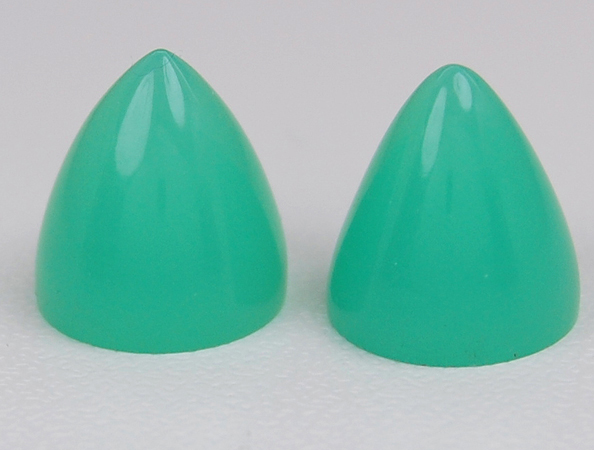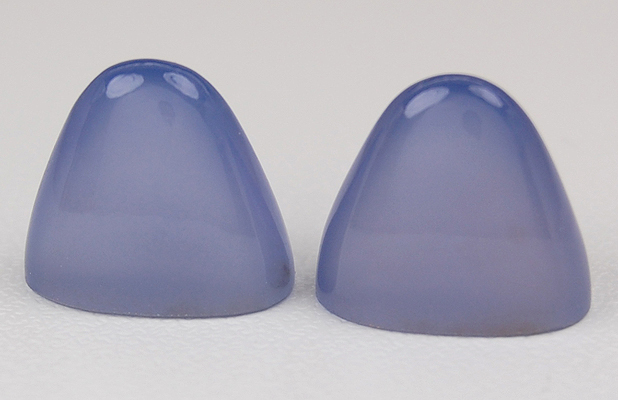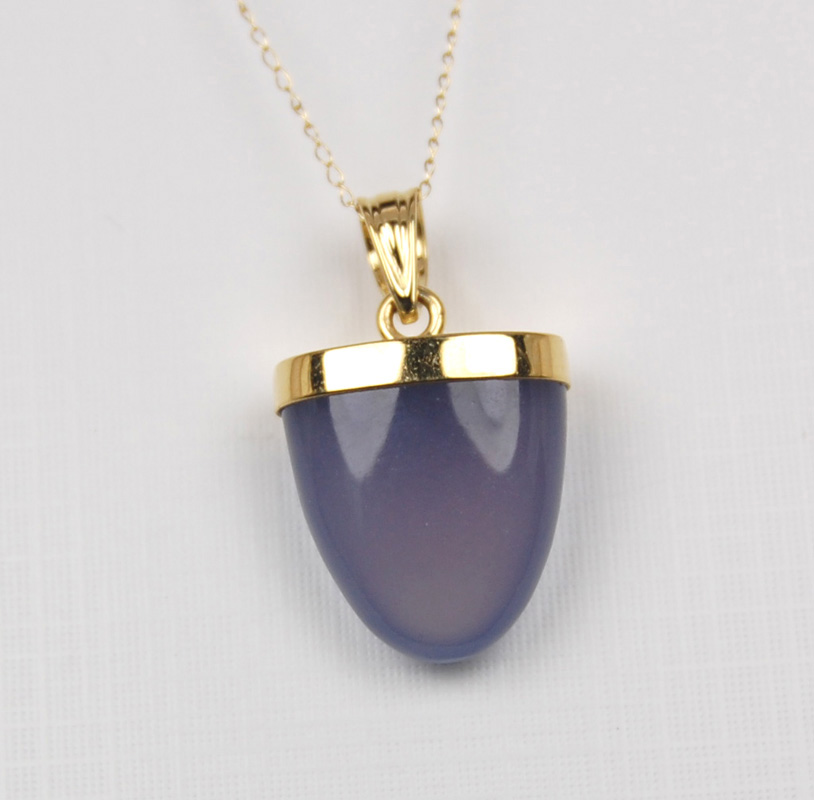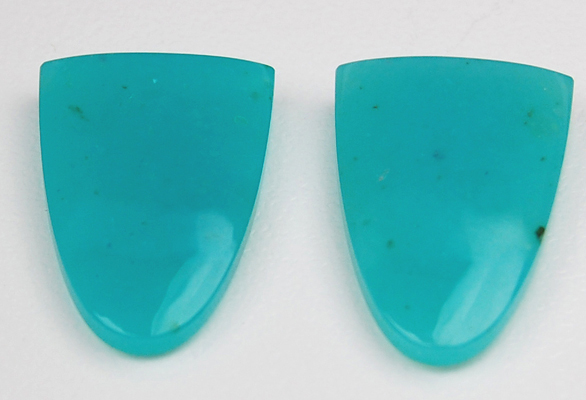Introduction: Chalcedony is microcrystalline or cryptocrystalline quartz with the chemical formula SiO2. Chalcedony can be semitransparent through opaque. Some of the varieties of chalcedony are:
Chrysoprase: semitransparent to translucent light to medium green to yellowish-green. The color is cause by nickel rich clay inclusions. A chrome green color is rare and colored by chromium. The best known locality for chrysoprase is Australia although Tanzania is a recent source. It has also been found in Brazil, Russia and California.

.jpg)
Carnelian: semitransparent to translucent yellow-orange to orangy-red, brownish red or brownish-orange. The color is caused by iron. Carnelian can be found in Brazil, India and Uruguay.
Bloodstone: semitranslucent to opaque, dark green chalcedony with red iron oxide spots. Australia, India, and Brazil are sources of bloodstone.
Prase: translucent to semitranslucent chalcedony with a darker less saturated color than in chrysoprase.
Agate: chalcedony with curved or angular bands in varying colors. Brazil, Madagascar, Mexico and the United States are the most common localities.
Moss Agate: chalcedony with green, black or brown inclusions resembling moss. Occurrence: India, Scotland, northwestern United Sates.
Onyx: chalcedony composed of straight banding in varying colors.
Sard: semitransparent to translucent chalcedony, dark brownish-red to brown to dark orange. The colors are darker and less saturated than carnelian.
Sardonyx: onyx showing straight, parallel bands of sard colors alternating with white bands.
Jasper: general term applied to semitranslucent to opaque chalcedony of any color or combination of colors, often with a defined pattern. Occurrence: Madagascar, Oregon, Idaho, Utah, Montana
Petrified Wood: wood that has been entirely replaced by chalcedony. Occurrence: Arizona, New Mexico, California, Oregon
Dendritic Agate: chalcedony with dark brown or black inclusions resembling tree branches.
Blue (or Purple) Chalcedony: semitransparent to translucent chalcedony, blue or purple in color. Blue chalcedony is widely available from Namibia. Blue and purple has been found in the United States at Tehachapi, California and purple has been found in Nevada.


Chrysocolla Chalcedony or Chrysocolla Quartz: translucent to semitranslucent blue or blue-green chalcedony colored by the copper mineral chrysocolla, known in the trade as gem silica. It is also seen with drusy quartz crystals covering the chrysocolla chalcedony. Arizona is a prime source for some of the finest material although it is also found in New Mexico and Mexico.

Fire Agate: semitranslucent to opaque chalcedony with iridescent colors against a dark brown body color. The brown body color is due to impurities of iron. The iridescent colors seen are caused by alternating silica and iron oxide (limonite) layers which diffract the light to form the iridescent colors. Fire agate is found in the southwestern United Sates and northern Mexico.

Stone Sizes: Large stones are common in many varieties. Chrysoprase nodules weighing 700 kg and almost 1500 kg were found in Australia. Typical cutting styles include cabochons, carvings and beads.
Treatments:
-Dyeing (D) to practically all colors can be done easily with chalcedony due to its porous nature. Virtually, all black onyx is dyed black. The process involves soaking the chalcedony in a sugar solution followed by a bath in sulfuric acid resulting in a black color.
-Heating (H) is possible to produce orange or orangy-red colors from yellow and brown material.
Gemology:
-Refractive Index: 1.535-1.539, (spot reading 1.54)
-Birefringence: usually not measured if spot reading is taken but 0.004 otherwise.
-Optic Character: AGG (aggregate)
-Specific Gravity: 2.60 (+0.10,-0.05)
-Hardness: 6.5 to 7
-Toughness: good
-Chemical Composition: SiO2
-Absorption Spectra: dyed green has vague lines around 645 and 670 nm.
-Fluorescence: usually inert
-Cleavage: none
-Phenomena: iridescence
Name: Chalcedony is an ancient name, perhaps from Chalcedon, a seaport in Asia Minor.
Dates: Bloodstone is an alternate birthston for March. Onyx is suggested as a 7th anniversary stone.
Care: The ultrasonic and steam cleaner are usually safe. Warm, soapy water is always safe.
